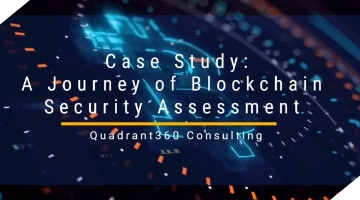Background
BlockSecure, a fictitious name to protect our client is a burgeoning cryptocurrency exchange, was rapidly gaining popularity, processing millions of transactions daily. However, with its growing user base, the risk of cyber threats loomed large. Determined to safeguard its platform, BlockSecure enlisted the help of our expert team to conduct a comprehensive blockchain security assessment.
The Beginning
The first step was to define the scope of our mission. We needed to focus on critical components such as smart contracts, the blockchain protocol, and the network infrastructure. Our goal was clear: identify vulnerabilities, ensure regulatory compliance, and fortify the security framework.
Gathering Intel
We began by gathering crucial information. The BlockSecure team provided us with detailed design documents, architectural diagrams, and developer notes. We secured access to the source code of their smart contracts and blockchain protocol and examined node configurations, network settings, and third-party integrations for potential misconfigurations.
Uncovering Hidden Threats
With our intel in hand, we deployed automated tools like Mythril and Slither to scan the code for vulnerabilities. These tools quickly identified issues such as reentrancy attacks and arithmetic overflows. However, automated tools have their limits, so our experts conducted a meticulous manual review to uncover complex security issues and logical errors that might have slipped through.
Assessing the Risks
Next, we evaluated the impact and likelihood of each identified vulnerability. This risk assessment helped us prioritize remediation efforts, ensuring that the most critical issues were addressed first.
Reporting the Findings
We compiled our findings into a comprehensive report, detailing each vulnerability, its potential impact, and our assessment methodology. For each issue, we proposed specific remedial actions, including code fixes and configuration changes. We prioritized these recommendations to guide BlockSecure’s development team in addressing the most pressing concerns.
Facing the Challenges
During our assessment, we encountered several challenges. The initial scans revealed numerous vulnerabilities within the smart contracts. The access controls were insufficient, allowing potential unauthorized access, and the platform lacked real-time monitoring tools.
Overcoming Obstacles
To tackle the smart contract vulnerabilities, we refactored the code, implementing secure coding practices and conducting additional testing. We enhanced the access controls by implementing role-based access controls (RBAC) and strengthening authentication mechanisms. To address the monitoring gap, we deployed advanced real-time monitoring solutions, significantly improving threat detection and response times.
- Unexpected External Dependency
- Challenge: During the manual review, we discovered that one of BlockSecure’s smart contracts relied on an external oracle service for price feeds. This dependency posed a significant risk if the oracle service was compromised or unreliable.
- Solution: We recommended implementing multiple independent oracles and using an aggregate of their data to reduce the risk of manipulation. Additionally, fallback mechanisms were introduced to handle situations where the primary oracle data was unavailable.
- Hidden Backdoor in Legacy Code
- Challenge: In the process of reviewing older smart contracts, our team found a hidden backdoor that could allow unauthorized access to user funds. This backdoor had been overlooked in previous audits due to its obfuscated code.
- Solution: We promptly alerted BlockSecure’s development team, who deactivated the affected smart contracts. New contracts were redeployed with the backdoor removed, and comprehensive code reviews were conducted to ensure no other hidden vulnerabilities existed.
- Integration with Third-Party Wallets
- Challenge: BlockSecure’s integration with several third-party wallets introduced potential security vulnerabilities, as these wallets did not adhere to the same security standards.
- Solution: We recommended a thorough security review of the third-party wallets and established strict criteria for future integrations. BlockSecure also developed an in-house wallet solution with enhanced security features to provide users with a safer alternative.
The Outcome
The security enhancements had a profound impact on BlockSecure. The implementation of multi-signature wallets and cold storage solutions reduced the risk of unauthorized fund transfers, safeguarding user assets. The robust incident response plan and real-time monitoring allowed for quick detection and response to potential security incidents, minimizing their impact. Transparent communication about the security measures built stronger trust with users, leading to increased user retention and platform growth. Moreover, the security enhancements ensured compliance with relevant regulations, facilitating BlockSecure’s expansion into new markets.
Conclusion
BlockSecure’s journey through the blockchain security assessment underscores the importance of proactive and comprehensive security measures in protecting cryptocurrency exchanges. By identifying and addressing vulnerabilities, implementing robust controls, and fostering a culture of continuous improvement, BlockSecure successfully enhanced its security posture and built trust with its user base.


